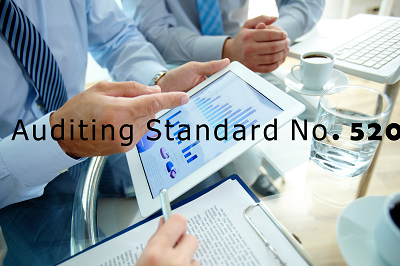Auditing Standard No. 520: Audit Evidence – Analytical Methods

Auditing Standard No. 520: Audit Evidence – Analytical Methods
Auditing Standard No. 520, which we want you to know about this standard, to know about this standard, follow the article.
Distortion of analytical methods
Analytical methods include comparing the financial information of the business unit or information such as the following:
Comparative information of previous courses.
The results of the business entity’s expectations, such as budgets or forecasts, or the auditor’s expectations, such as the estimate of depreciation.
Similar industry information, such as comparing the ratio of sales to commercial receivables of the business unit with the average of the industry or other business units of the same size in the same industry (paragraph 1-1).
Relationships between elements of financial information that are expected to follow a predictable pattern based on the entity’s business, such as gross profit percentage.
Relationships between financial information and related non-financial information, such as the relationship between salary expenses and benefits with the number of employees (paragraph T-2).
Analytical methods can be implemented in various ways.
The scope of these methods is wide, from simple comparisons to complex analyzes based on advanced statistical methods.
Analytical methods can be applied to consolidated financial statements, departments and each of the information elements (paragraph T-3).
Design and implementation of analytical methods
The independent auditor, when designing and implementing analytical methods as tests of content, alone or always or tests of details, is required:
a) Determine the appropriateness of the analytical methods planned for these claims, taking into account the assessed risks of material misstatement and any tests of detail that may be performed on the claims in question.
b) Considering the source, nature, comparability and relevance of the available information and the controls governing their preparation, evaluate the reliability of the data on which the independent auditor’s expectations about the recorded ratios or amounts are based.
d) To determine his expectations of the recorded ratios or amounts and to evaluate whether these expectations to detect a misstatement that, alone or in combination with other misstatements, may cause a material misstatement of the financial statements, as much as Is it accurate enough or not, and
d) Determine the maximum acceptable discrepancy between the recorded amount and the expected values, which does not need further investigation. (paragraph T-3).
Tests to determine the content of the independent auditor at the assertion level may include tests of details, analytical methods, or a combination of both.
Deciding on the selection of audit methods, including analytical methods, depends on the independent auditor’s judgment about the expected effectiveness and efficiency of the existing audit methods to reduce the audit risk at the level of the desired claim to an acceptable low level (para. T-4).
The independent auditor can inquire about the accessibility and reliability of the information necessary to apply the analytical methods, as well as the results of the analytical methods performed by the business unit, from the executive managers of the business unit.
The use of analytical information prepared by executive managers can be effective if the auditor is sure of the correctness of their preparation (paragraph T-5).









